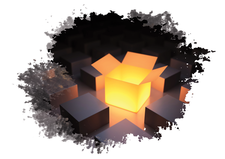Useful and lesser-known features of VirtualBox
Under the Hood

The VirtualBox virtual machine tool is a familiar sight on Linux systems, but many users don't access the full range of its powers. This article highlights some advanced features of VirtualBox that could save you some time and effort.
VirtualBox is a powerful virtualization tool that supports a variety of Windows and Linux guest systems. Most users control VirtualBox via the VirtualBox Manager. In this graphical user interface, you can set up a virtual machine with just a few mouse clicks. However, many VirtualBox users don't realize that the VirtualBox Manager also has some interesting advanced functions hidden in the depths of its settings menus and dialogs.
Be Friendly
Snapshots freeze the current state of a virtual machine and save it. You can then restore this state any time later with just a mouse click. Snapshots are especially useful for Windows guests: Before an update is due, you create a new snapshot to which can you return with just two mouse clicks in case of a failed update. Anyone who has ever had a function update blow up in their face under Windows will quickly appreciate this help.
To create a new snapshot, click the small black triangle in the top right corner of the VirtualBox Manager, next to the VM Tools icon, and select Snapshots (Figure 1). You will now see a list of all snapshots that have already been taken. At first, you will only see the Current state entry.
[...]
Buy this article as PDF
(incl. VAT)
Buy Linux Magazine
Subscribe to our Linux Newsletters
Find Linux and Open Source Jobs
Subscribe to our ADMIN Newsletters
Support Our Work
Linux Magazine content is made possible with support from readers like you. Please consider contributing when you’ve found an article to be beneficial.

News
-
Mozilla Plans to AI-ify Firefox
With a new CEO in control, Mozilla is doubling down on a strategy of trust, all the while leaning into AI.
-
Gnome Says No to AI-Generated Extensions
If you're a developer wanting to create a new Gnome extension, you'd best set aside that AI code generator, because the extension team will have none of that.
-
Parrot OS Switches to KDE Plasma Desktop
Yet another distro is making the move to the KDE Plasma desktop.
-
TUXEDO Announces Gemini 17
TUXEDO Computers has released the fourth generation of its Gemini laptop with plenty of updates.
-
Two New Distros Adopt Enlightenment
MX Moksha and AV Linux 25 join ranks with Bodhi Linux and embrace the Enlightenment desktop.
-
Solus Linux 4.8 Removes Python 2
Solus Linux 4.8 has been released with the latest Linux kernel, updated desktops, and a key removal.
-
Zorin OS 18 Hits over a Million Downloads
If you doubt Linux isn't gaining popularity, you only have to look at Zorin OS's download numbers.
-
TUXEDO Computers Scraps Snapdragon X1E-Based Laptop
Due to issues with a Snapdragon CPU, TUXEDO Computers has cancelled its plans to release a laptop based on this elite hardware.
-
Debian Unleashes Debian Libre Live
Debian Libre Live keeps your machine free of proprietary software.
-
Valve Announces Pending Release of Steam Machine
Shout it to the heavens: Steam Machine, powered by Linux, is set to arrive in 2026.

